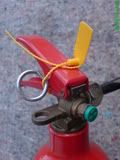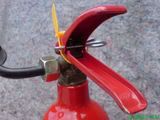matthewjohnston:
Can someone please give me a list of all items required for a full ADR kit, except class 1 and 7.
Hi Matthew,
Do you have an up-to-date Instructions In Writing?
If not, then please PM me a valid email address, and I’ll send you the correct version.
When carrying ‘in scope’ dangerous goods, a vehicle needs the following:
1 X suitable wheel-chock
2 X self-standing warning signs (cones, triangles or amber flashing lights)
1 X eye rinsing liquid (Not required for UN classes 1 or 2.)
When carrying ‘in scope’ dangerous goods, each person on board a vehicle needs the following:
1 X Hi-viz
1 X portable lighting apparatus ( = a torch)
1 pair of protective gloves
1 pair of goggles
Extra vehicle equipment depending on the UN Class(es) of dangerous goods to be carried:
For UN Classes 2.3 and 6.1, a respirator with suitable filter cartridge. (Including when 6.1 is a secondary hazard.)
For UN Classes 3, 4.1, 4.3, 8 & 9
1 X shovel
1 X drain seal
1 X collecting container
Once you’re carrying ‘in scope’ dangerous goods, a vehicle needs the following fire extinguishers:
1 X 2kg dry powder extinguisher suitable for fighting a fire in the engine or the cab of the vehicle.
Something like this:
 or this
or this 
PLUS at least one more fire extinguisher depending on the permitted G.V.W. of your vehicle as follows:
(The actual weight of goods that you’re carrying is irrelevant here  )
)
Permitted G.V.W. up to and including 3,500 kgs needs ANOTHER 2kg extinguisher as above, making a total of 4kgs.
Permitted G.V.W. between 3,500kgs and up to and including 7,500kgs needs ANOTHER 6kg extinguisher making a total of 8kgs
Permitted G.V.W over 7,500kgs ( = ANY LGV) needs ANOTHER 10kg extinguisher making a total of 12kgs
Once the vehicle is an LGV, it doesn’t matter whether it’s a rigid, a wag and drag or an artic.
On most vehicles, the larger of the extinguishers is carried outside the vehicle in some kind of protective covering,
something like this:

Other requirements:
-
Extinguishers must be of an approved type ie. the Kite Mark or the CE mark.
-
Extinguishers must be periodically inspected and bear a label / sticker showing the next due date of inspection
-
Extinguishers must be fitted with a seal
Something like this:


-
Extinguishers must be protected from the effects of the weather.
-
Extinguishers must be easily accessible.
 or this
or this 


